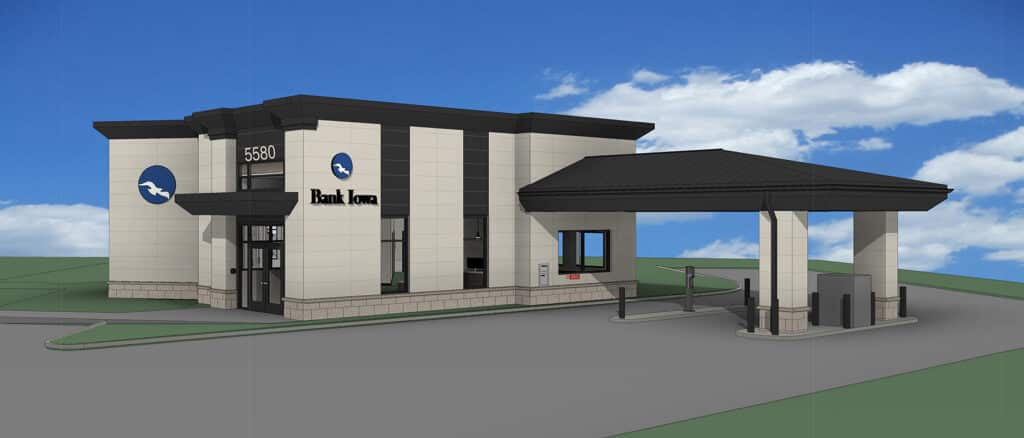Have we reached the ‘final frontier’ with real-time payments?
Harris: Dwolla integration with cryptocurrencies on company’s growth road map

JOE GARDYASZ May 13, 2021 | 4:41 pm
4 min read time
971 wordsBanking and Finance, Business Record InsiderWhether it’s getting that perfect tan or losing weight or getting our messages, Americans seem to want everything to come to them faster and faster, and the same is true with payment transtactions, says Brady Harris, CEO of Dwolla.
In other words, retail customer demand is driving the frenzied pace of developing ever-faster payments systems, and there have been significant breakthroughs within the past couple of years to make those a reality, Harris said.
Dwolla recently announced a new Real-Time Payments (RTP) platform that enables business clients to send money directly to a bank account using the RTP Network established by the Clearing House, which is a payment “rail” that Dwolla has used from the time the company was founded more than a decade ago.
The new payment platform, which Dwolla launched in partnership with New Jersey-based Cross River Bank, enables near-instantaneous fund transfers by customers.
The Des Moines-based fintech company anticipates year-over-year growth in the 25-50% range this year as transaction volume rockets upward, powered with a menu of payments options that are aimed at being scalable from small startups through large enterprises.
The global digital payment market is anticipated to reach a transaction value of $19.89 trillion by 2026, with a compound annual growth rate of 24.4% during the forecast period, driven by the increasing usage of smartphones worldwide, according to a March forecast published by Fortune Business Insights.
Dwolla is part of a growing infrastructure of specialized payments companies that are supporting a diverse ecosystem of payment modalities. To the casual observer, it may look like all of these companies, whose names often seem to end with -ly or -ify, are competing feverishly to reach the same customers with the same services.
Though it’s a seemingly crowded market space, the host of companies that are emerging function more as a complementary system of options for businesses rather than as cutthroat competitors, Harris contends.
“The truth is, when you peel the covers back, the payment space actually becomes pretty vast, where there is almost never a direct competitor where another fintech has a core competency [equal] to what your core competency is,” he said.
Harris, who joined Dwolla just over a year ago from another fintech company, Payscape, has spent the bulk of his career working with systems that operate on the Visa-Mastercard “rails” as opposed to the ACH rails that Dwolla and its RTP product uses.
Dwolla, now in its 11th year of operations, handled just under $20 billion in gross payment volume in 2020, and forecasts that it will grow to between $25 billion and $30 billion in gross payment volume this year, including an estimated $1 billion of RTP transactions in the first year.
“That’s a huge jump, year over year,” Harris said. “If you look at it visually, our gross payment volume is kind of a hockey stick — it’s going almost straight up, it’s really great growth. And that just reflects that the customers we’re onboarding are scaling themselves. … I would not be surprised if we surpass $4 billion in monthly volume at some point during the year.”
Much of the growth will be driven by one of Dwolla’s largest clients — a $9 trillion global fintech that has adopted Dwolla’s RTP platform under its own brand, he said. Additionally, Dwolla currently has a waiting list of current customers that want to convert from conventional transfers to RTP.
“A really unique advantage we have is as a customer scales, we might have somebody who says: ‘I need to just send and receive money. It’s OK if it takes two to three days. Give me a basic product.’ But at some point they may want to access RTP as an option. And all they do is toggle a single line of code [to create] a new drop-down they can now send RTP transactions, and the pricing is already baked in should they choose to take advantage of certain premium features.”
Because of the needs at each end of the growth spectrum, Harris sees the technologies as complementary, rather than one cannibalizing the other. It appears to be that way among the fintech ecosystem as well, he said.
“The great thing about fintech is that if you look at our core product and you put us on a matrix showing where our direct competitors are in relation to what we focus on, people are really scattered in all different quadrants. And there’s certain things that other fintech companies might do that’s not our core competency or it’s not something that we want to do, and vice versa.
“So what’s now happening in fintech is actually less of competing with other companies that have the same core offering, and [more] figuring out ways to leverage and complement each other through what we call the commingling or the integration of the two different technologies.”
Will cryptocurrency payment systems like Bitcoin eventually integrate with real-time payment systems? It’s actually something that’s on the long-term horizon for Dwolla, Harris said.
Cryptocurrencies are “a really interesting product that could fit into our tech stack really nicely,” he said. “We currently have cryptocurrency capability on our five-year road map, so it’s something that we plan on doing. The only question is, how quickly do we bring it forward on the road map and accelerate it and put resources there? Are we OK with two years out, or three years out? That’s one of the things we’re trying to solve for with our current investors, and what will hopefully be our new investors as we close our Series C fundraiser.
“Anecdotally, there is a lot of interest in the investment community to figure out how to take payment technologies like Dwolla, and then superimpose or leverage it with the cryptocurrency conversation. So long story short, it’s something that we’re watching really closely.”










